| Weight | 1 lbs |
|---|---|
| Dimensions | 9 × 5 × 2 in |
| host | mouse |
| isotype | IgG |
| clonality | monoclonal |
| concentration | concentrate, predilute |
| applications | IHC |
| reactivity | human |
| available size | 0.1 mL, 0.5 mL, 1 mL concentrated, 7 mL prediluted |
rabbit anti-Cytokeratin 19 monoclonal antibody (ZR143) 6141
Price range: $160.00 through $528.00
Antibody summary
- Rabbit monoclonal to Cytokeratin 19
- Suitable for: Immunohistochemistry (formalin-fixed, paraffin-embedded tissues)
- Reacts with: Human
- Isotype:IgG
- Control: Breast carcinoma
- Visualization: Cytoplasmic
- 0.1, 0.5, 1.0 mL concentrated, 7 mL prediluted
rabbit anti-Cytokeratin 19 monoclonal antibody ZR143 6141
| target relevance |
|---|
| Protein names Keratin, type I cytoskeletal 19 (Cytokeratin-19) (CK-19) (Keratin-19) (K19) |
| Gene names KRT19,KRT19 |
| Protein family Intermediate filament family |
| Mass 44106Da |
| Function FUNCTION: Involved in the organization of myofibers. Together with KRT8, helps to link the contractile apparatus to dystrophin at the costameres of striated muscle. {ECO:0000269|PubMed:16000376}. |
| Tissues TISSUE SPECIFICITY: Expressed in a defined zone of basal keratinocytes in the deep outer root sheath of hair follicles. Also observed in sweat gland and mammary gland ductal and secretory cells, bile ducts, gastrointestinal tract, bladder urothelium, oral epithelia, esophagus, ectocervical epithelium (at protein level). Expressed in epidermal basal cells, in nipple epidermis and a defined region of the hair follicle. Also seen in a subset of vascular wall cells in both the veins and artery of human umbilical cord, and in umbilical cord vascular smooth muscle. Observed in muscle fibers accumulating in the costameres of myoplasm at the sarcolemma in structures that contain dystrophin and spectrin. {ECO:0000269|PubMed:16000376, ECO:0000269|PubMed:2468493, ECO:0000269|PubMed:2469734}. |
| Structure SUBUNIT: Heterotetramer of two type I and two type II keratins. Interacts with PNN and the actin-binding domain of DMD. Interacts with HCV core protein. {ECO:0000269|PubMed:10809736, ECO:0000269|PubMed:16000376}.; SUBUNIT: (Microbial infection) Interacts with hepatitis C virus/HCV core protein. {ECO:0000269|PubMed:15846844}. |
| Domain DOMAIN: This keratin differs from all other IF proteins in lacking the C-terminal tail domain. |
| Target Relevance information above includes information from UniProt accession: P08727 |
| The UniProt Consortium |
Data
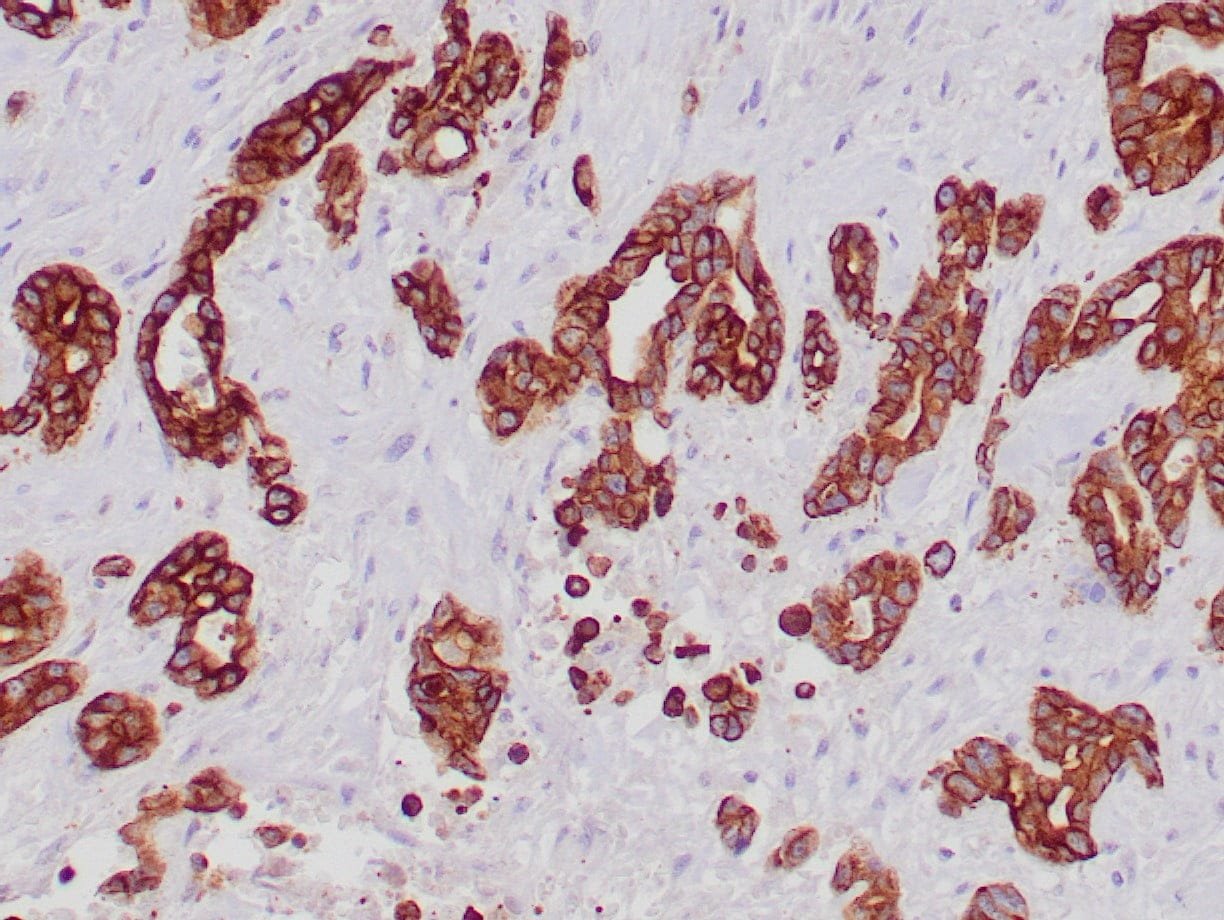 |
| Formalin-fixed, paraffin-embedded human pancreatic ductal carcinoma stained with anti-keratin 19 antibody using peroxidase-conjugate and DAB chromogen. Note the cytoplasmic staining of tumor cells |
Publications
| pmid | title | authors | citation |
|---|---|---|---|
| We haven't added any publications to our database yet. | |||
Protocols
| relevant to this product |
|---|
| IHC |
Documents
| # | SDS | Certificate | |
|---|---|---|---|
| Please enter your product and batch number here to retrieve product datasheet, SDS, and QC information. | |||
Only logged in customers who have purchased this product may leave a review.
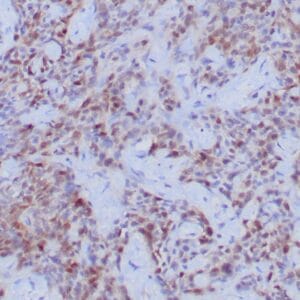
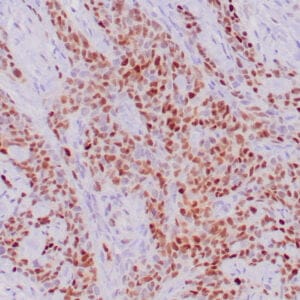
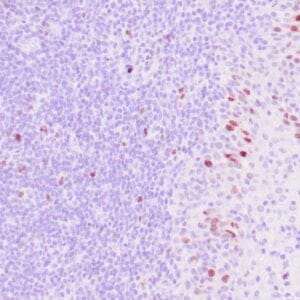
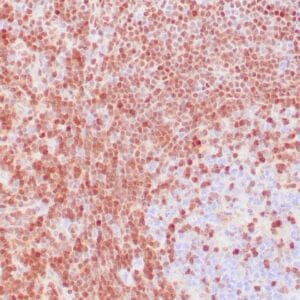
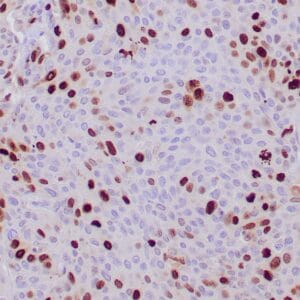
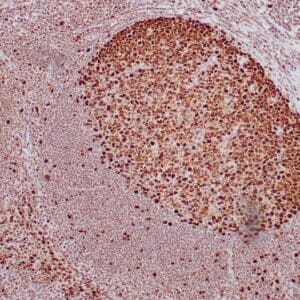

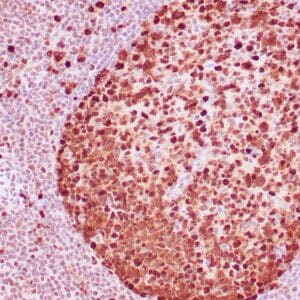
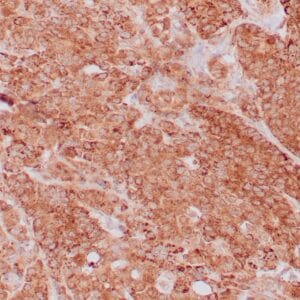


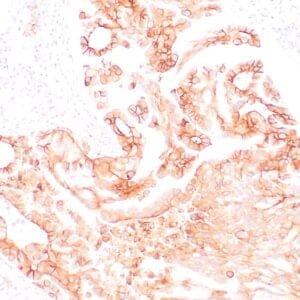
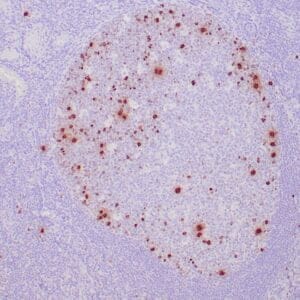

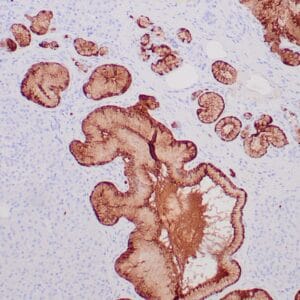
Reviews
There are no reviews yet.